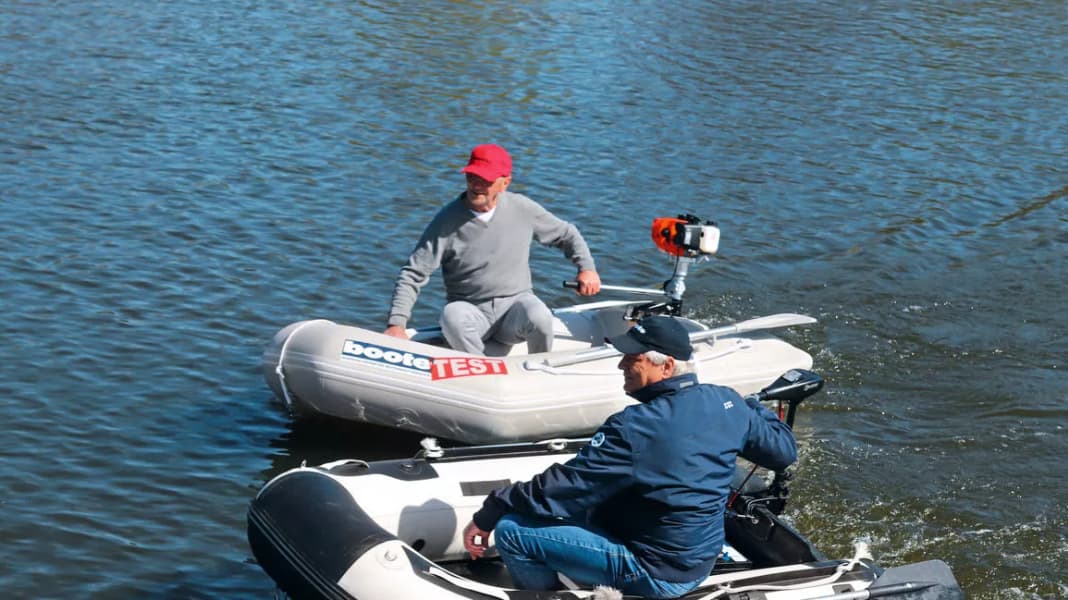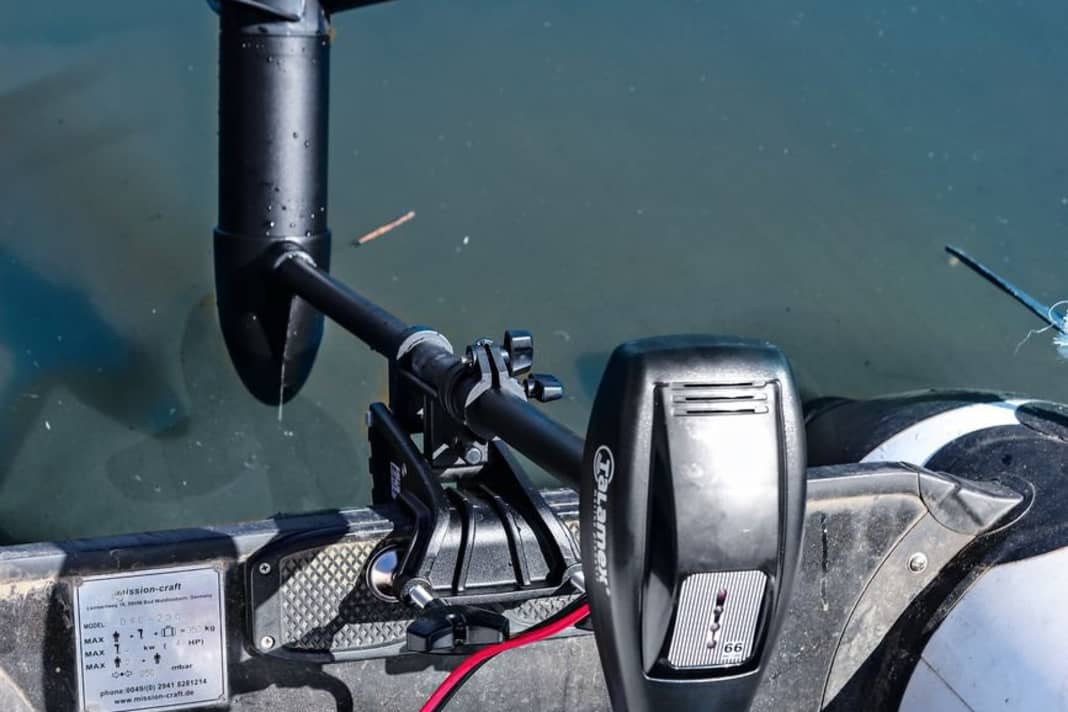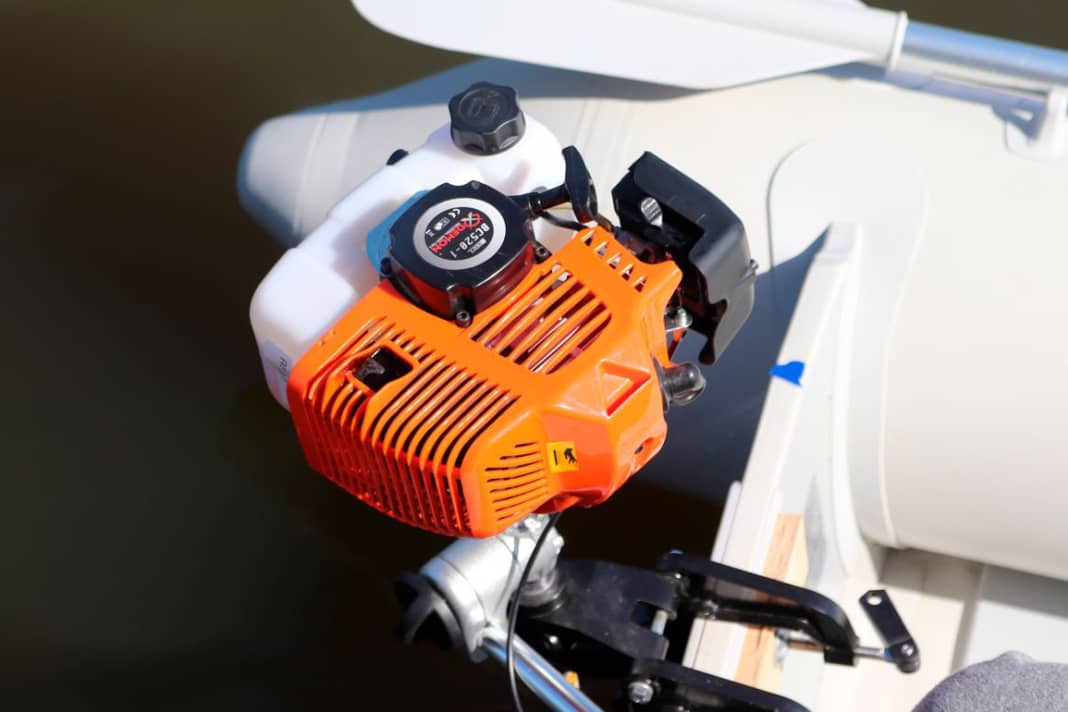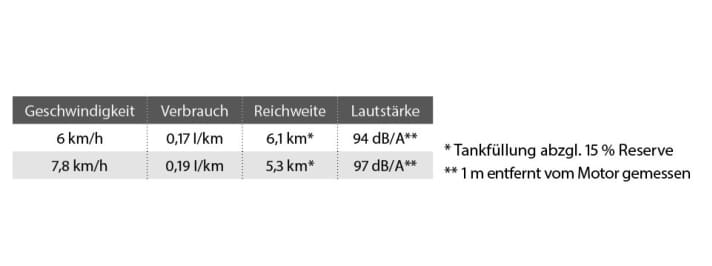
In BOOTE 9/2019, we published a comparative test of three affordable combustion outboards. At that time, two two-stroke engines were pitted against a four-stroke engine.
Inspired by this test, we received plenty of letters asking us to test inexpensive electric outboards. However, we first took up a different comparison: How does the increasingly popular electric motor fare against the combustion engine? So we put the cheapest petrol engine from the 2019 test up against an electric outboard motor that is also as cheap as possible but not too weak. Here are the most important data of the opponents: We can only guess at the power output of the Demon combustion engine, as it is not specified in the operating instructions. The information online is also not exact. We estimate that it is between around 1 and 2 hp. Its superstructure tank has a capacity of one litre.
The Talamex special battery has no problems with deep discharge
The output of the electric competitor Talamex TM66 is specified as 660 W, which equates to just under 0.9 hp. For its tank, i.e. the battery, we rely on a special battery, also from Talamex (105 Ah Deep Cycle). According to the manufacturer, this battery should have no problems with deep discharge and is specially designed for electric motors. This means that we have only included a reserve of 15 per cent in our calculations. You can find out how to operate the motors in the operating instructions. A booklet in Polish only was included with the delivery, whereas the booklet from Elektro Talamex has nine languages - including German.
The Talamex TM66 in pictures:





Assembling both motors is not rocket science and can be done in just a few minutes. Special features of the Talamex: The tiller is variable in length and the twist grip has five forward and three reverse positions as well as a neutral position. The twist throttle on the Demon also has raster stages, but these are somewhat more finely graduated, and the motor has a centrifugal clutch. This means that the propeller only starts to move when the engine speed is increased. Of course, unlike the electric motor, it still needs to be started before you can set off - the latter, on the other hand, needs its connection to the battery (see picture above). The propellers of both motors have three blades and are made of plastic.
In terms of volume, the electric is ahead of the rest
The measurement results: At top speed, the Demon has the edge with just under 2 km/h more. In terms of range, however, which we can only compare at 6 km/h, the electric motor has a better result. This is simply due to the special battery. To be fair, it has to be said that a "sip" from the five-litre petrol canister in the boat quickly gets the Demon ready to go again. This is not so easy when charging the battery. A charger has to be connected for several hours before you can start again with a full battery. Talamex specifies the charging cycles as 300-400.
Demon BC 520-1 combustion engine in pictures:




The volume of the electric motor is a huge advantage, as you only hear a "whisper" and the sound of the stern water splashing, whereas the combustion engine makes the whole harbour rebel with its annoying sound. Manoeuvring is easier with the electric motor, as the boat can be stopped as usual with its "reverse gears". With the Demon, the entire motor has to be turned 180 degrees for this, and then the skipper also has to accelerate accordingly so that the centrifugal clutch engages.
Both motors are easy to carry and easy to attach
There are no problems attaching the motors due to the relatively low weights. With the electric motor, however, the battery still has to be lifted into the boat, which is usually no easy task, especially from the cockpit to the bathing platform and from there into the dinghy.
Conclusion
The outdated, noisy two-stroke technology - even if you can buy it very cheaply - is absolutely not state of the art and can therefore no longer be recommended with a clear conscience. The Talamex can convince with its quiet nature, but it is powered by the unwieldy, heavy battery and this in turn by a charger, which must be plugged into a "green power socket" so that the environmental concept also fits.
Technical data Talamex TM66
- Design: Electric motor
- Max. output:660 W
- Max. thrust:30.1 kp
- Weight:12 kg
- Recommended battery:12 V/100/180 Ah
- Cooling: Water (flow around motor housing)
- Shank length:variable max. 910 mm
- Circuit: neutral/ 5 steps forwards/ 3 steps backwards
- Test propeller: 3 sashes plastic PT-03
- Tiller length: variable 450-600 mm
- Price: 294,00 € + 180,90 € (Batt.)
- Source of supply: www.bauhaus.de
Measurement results

Technical data Demon BC 520-1
- Manufacturer and type: Demon BC 520-1
- Design:Two-stroke petrol engine
- Cylinder: 1
- cubic capacity: 51.7 cc
- Performance:k.A.
- speed range: max. 9000 rpm
- Weight weighed:8.6 kg
- Fuel: Two-stroke mixture 1 : 25
- fuel system: Carburettor
- Tank contents emptied: 1,0 l
- Ignition: k.A.
- Cooling:air-cooled
- Light coil: no
- Shank length: 0,41 m
- Gear ratio: 2,08 : 1
- Gear shift: neutral/forward with centrifugal clutch
- Test propeller: k.A.
- Tiller length: 0,52 m
- Price: 154,90 €
- Source of supply: Amazon
Measurement results


